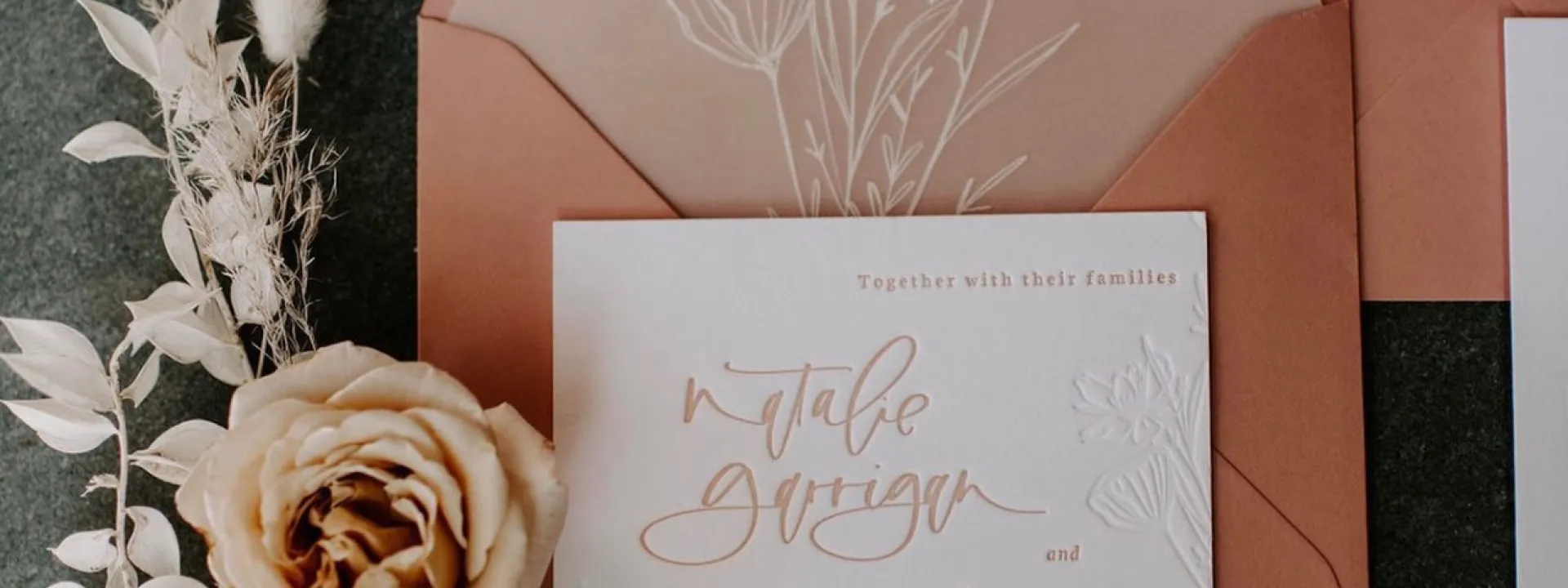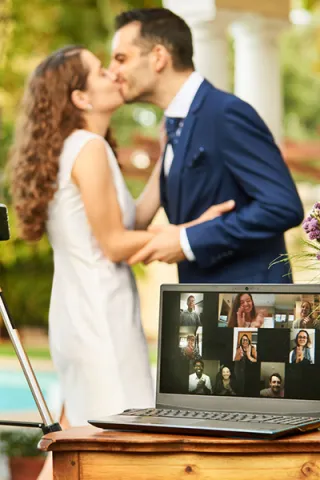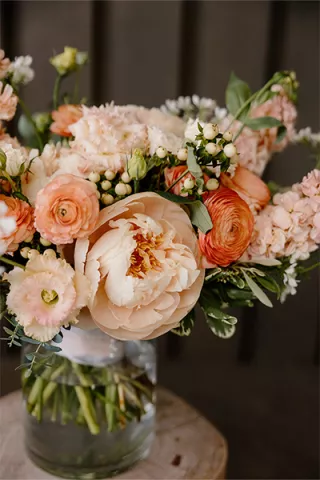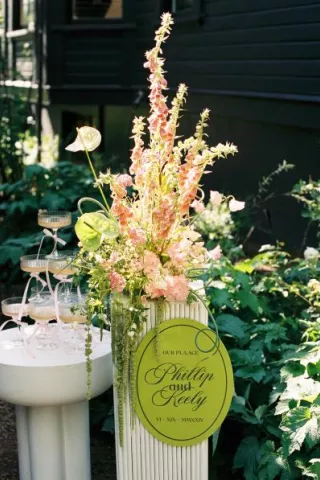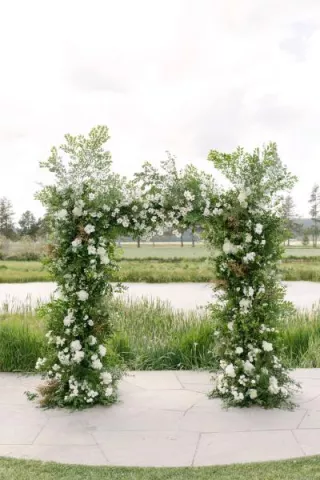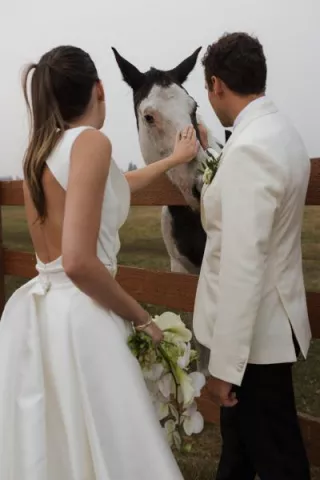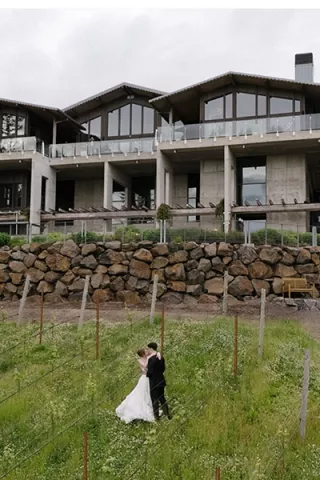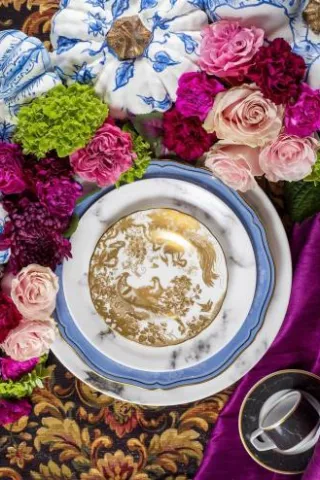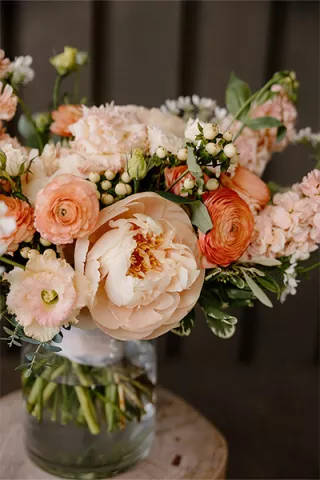Whether your style is formal or casual, contemporary or classic, the first impression of your wedding is made clear to guests by your invitations. In addition to the style, you will want to explore all the options including paper selection, font type and color palette. All these elements factor into making a splash with your invitations and setting the tone for what to expect at your wedding.
We have outlined some of the many details that are part of most wedding invitations. By going to a paper goods vendor, you get to work with an expert who can answer any questions or make creative recommendations for the best way to accommodate any vision.
SAVE THE DATE
A save-the-date announcement notifies guests to mark your wedding date on their calendar in advance to ensure enough time for any out-of-town guests to make travel arrangements. You can send save-the-date announcements anytime between six to 12 months in advance of your wedding date. A save-the-date can be sent in the form of a card, magnet or any other creative medium of your choosing.
WEDDING INVITATIONS
About four to six weeks before the wedding, guests should receive your invitation in the mail. Choose carefully when selecting your invitations, and remember to have fun with them. Your invitations should reflect your style and personality as a couple.
Traditionally, wedding invitations use two envelopes of different sizes: one inner and one outer envelope. If your selection includes an inner envelope, the invitation is inserted into it facing the back flap, with the names of those invited handwritten on the front. When doing so, never use the term, “and family.” The inner envelope should be addressed as follows:
Mr. and Mrs. Bennet
and
Elizabeth, Lydia, Kitty and Mary
Keep in mind that the inner envelope can be ordered with a colored liner, which may increase the cost slightly, but adds a splash of color and style to entice attendees. An address is not included on the inner envelope. This decorative envelope holds other key pieces of the wedding invitation such as a reception card with dates, times and addresses, an RSVP card with a self-addressed, stamped envelope, accommodation card and a map or directions card for out-of-town guests. After the inner envelope is properly addressed and stuffed, it is slipped into the outer envelope.
All envelopes should be handwritten. If your handwriting is not legible, consider using a calligrapher or asking a friend with pretty handwriting to address the invitations. If neither option is available, run the envelopes through your computer printer selecting a cursive font that coordinates with your wedding style. It is best to have your return addresses pre-printed on the outer envelope flap.
INVITATION VERBIAGE
When deciding on the appropriate wording for your wedding invitation, you will want to be mindful of both families. Using the proper language is important, as your family dynamic may be a delicate matter when parents of the couple have separated or divorced, passed away or are no longer part of the couple’s lives. It is also helpful to consider the role each family member is playing in the wedding as far as hosting responsibilities when deciding on the invitation verbiage, as it is important to acknowledge those that have agreed to host one of the pre-wedding events.
Note that the more formal phrase “the honour of your presence” is traditionally reserved for weddings held in a house of worship. For less formal ceremonies, “the pleasure of your company” or “the honour of your company” usually indicates that the ceremony will not include a worship service. When deciding on the use of “honour” versus “honor,” consider the style of your wedding and your personal preference. Be sure to remain consistent by using “favour” instead of “favor,” when utilizing a reply card.
While informal wording is becoming more common, remember to make it perfectly clear whether guests are being invited to a wedding ceremony or to the reception only. An example is, “... would be delighted by your presence at the marriage of their children” or “invite you to join them at the wedding reception of ...” The key to properly wording the invitation is to remain clear and concise while remaining comfortable with the words.
When the bride’s parents are divorced, the invitation is often issued by the parent who raised the bride. If both parents raised the bride, the names are listed on separate lines with the mother always named first without “and” between them. If the mother of the bride is remarried, she should be addressed by her married name.
RECEPTION LINE OR CARD
When the ceremony and reception are being held at the same location, a single invitation can be issued. If the reception is held at a different location, a separate card is helpful, but not required. NOTE: It is not considered acceptable to invite guests to the ceremony but not the reception.
RSVP LINE OR REPLY CARD
It is best to include a reply card with a stamped, self-addressed envelope to encourage guests to respond in a timely fashion. To prompt a punctual response, be sure to include the phrase, “RSVP by” with a date well before the wedding so that any food vendors have time to accommodate for larger numbers. Even though it is not required by traditional etiquette, doing so increases the probability of receiving a reply.
If you choose to use an RSVP line on the invitation, proper placement directs it to be printed in the lower left corner. You can also include a mailing address, phone number, email address or website for their response. If you prefer to use a separate card, the traditional fill-in-the-blank version provides the first letter of Mr. or Mrs. or a more casual option reads, “Please let us know whether you will join us” with space for writing.
If your reception includes a plated meal wherein the guests choose from a selection of entrées, those options should be printed on the reply card, one per line with a short blank line preceding each selection to fill in a number.
SPECIAL DETAILS ON THE WEDDING INVITATION
If you will not be serving a meal at your reception, it is courteous to inform your guests by using a phrase such as “and afterward for cocktails” rather than the classic “at the reception.” If you wish to indicate a dress code for your wedding guests such as “black tie only” or “casual attire,” print that notation in the lower right corner of the invitation or on the reception card. For instance, a New Year’s Eve wedding invitation might state “New Year’s Eve attire is encouraged,” signaling to guests that you wish for them to dress festively for both the holiday and the occasion.
It is important to note that your registry information should never be indicated anywhere on the invitation itself. Instead, you may include such information on your wedding website. Before ordering your invitations, verify that it contains all critical pieces of information, such as the host, a clear request, the couple’s names, date and time, ceremony location, reception location and finally the RSVP. This information can be arranged in a variety of ways to reflect the style of the occasion and the couple.
It is always important to consider proper etiquette, as well as keeping to your personal style when selecting your invitation and the appropriate phrasing.
